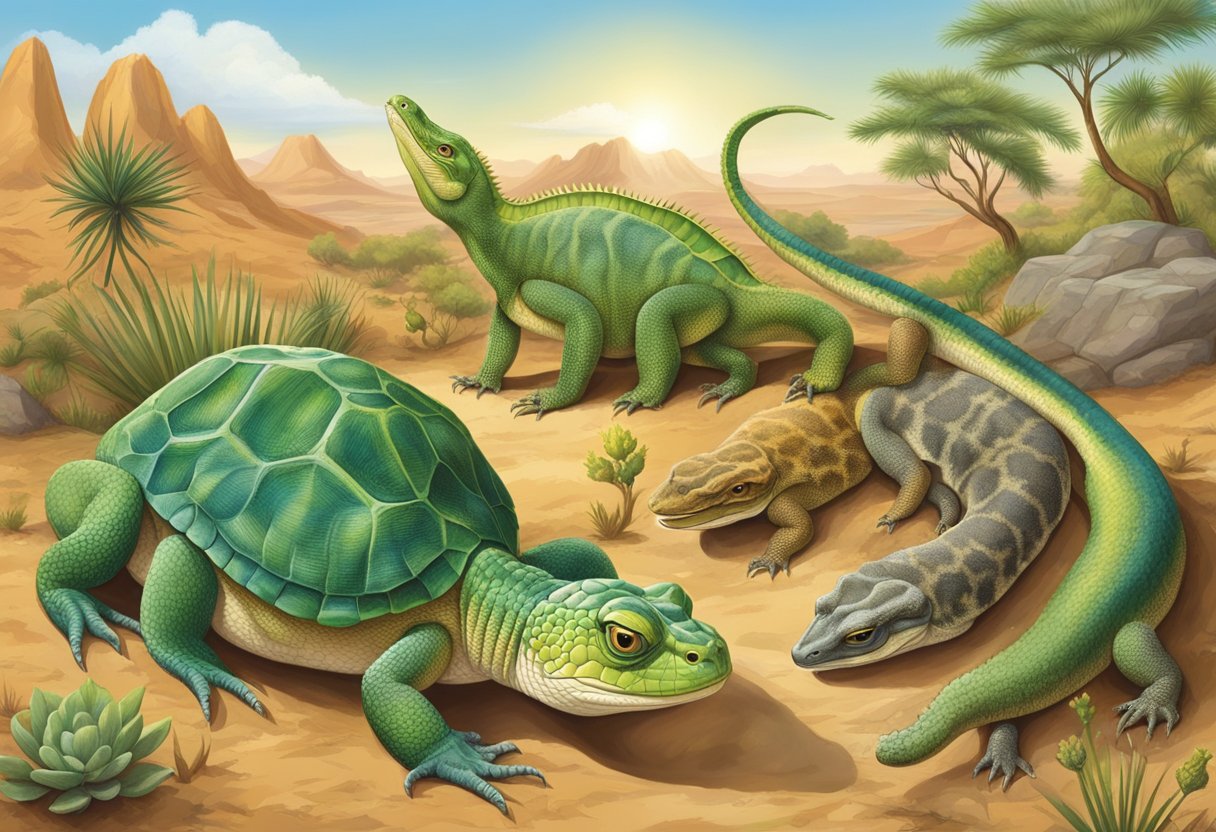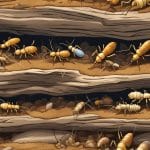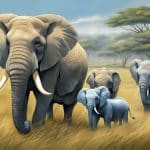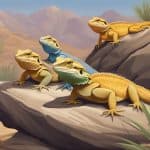Types Of Reptiles
Reptiles are a diverse group of cold-blooded vertebrates that are characterized by their scales, eggs, and unique anatomical and physiological features. They are members of the class Reptilia, which includes four main orders: Testudines (turtles), Crocodilia (crocodiles and alligators), Squamata (lizards and snakes), and Rhynchocephalia (the tuatara).
Reptiles have evolved over millions of years to become some of the most successful and adaptable creatures on Earth. They can be found in almost every habitat, from deserts and rainforests to oceans and rivers. Despite their many differences, all reptiles share certain characteristics, such as a tough, scaly skin, a three-chambered heart, and the ability to regulate their body temperature through behavior and external sources of heat.
Understanding the different types of reptiles and their unique adaptations is crucial for appreciating their role in the ecosystem and for developing effective conservation strategies. In this article, we will explore the evolution and classification of reptiles, their anatomy and physiology, their diverse behaviors and ecologies, and the challenges they face in a rapidly changing world.
Key Takeaways
- Reptiles are a diverse group of cold-blooded vertebrates that are characterized by their scales, eggs, and unique anatomical and physiological features.
- All reptiles share certain characteristics, such as a tough, scaly skin, a three-chambered heart, and the ability to regulate their body temperature through behavior and external sources of heat.
- Understanding the different types of reptiles and their unique adaptations is crucial for appreciating their role in the ecosystem and for developing effective conservation strategies.
Evolution and Classification

Historical Overview
Reptiles are a diverse group of cold-blooded vertebrates that have evolved over millions of years. The earliest reptiles are believed to have evolved from amphibians during the Carboniferous period, about 320 million years ago. During the Mesozoic era, reptiles dominated the planet, with dinosaurs being the most well-known group. However, many other reptiles also thrived during this time, including pterosaurs, marine reptiles, and crocodilians.
Taxonomy of Reptiles
Reptiles are classified into four main groups: Testudines (turtles), Crocodilia (crocodilians), Squamata (lizards and snakes), and Rhynchocephalia (the tuatara). These groups are further divided into different families and species. Reptiles are part of the larger class Reptilia, which also includes extinct groups such as the dinosaurs and pterosaurs.
The classification of reptiles has been a subject of debate and revision over the years, with new discoveries and research leading to changes in taxonomy. Reptiles are traditionally classified into two main groups: the Archosauria (which includes crocodilians and dinosaurs) and the Synapsid (which includes mammals and their extinct relatives). However, recent genetic studies have suggested that turtles may be more closely related to the Archosauria than previously thought.
In conclusion, reptiles are a fascinating group of animals that have evolved over millions of years. They are classified into four main groups and are part of the larger class Reptilia. While many reptile groups are now extinct, there are still many living species that continue to thrive today.
Anatomy and Physiology
Physical Characteristics
Reptiles are air-breathing vertebrates that have scaly skin and lay amniotic eggs. They are ectothermic, which means that their body temperature is regulated by the environment. Reptiles have a wide range of physical characteristics, including scales, scutes, shells, and lungs.
Scales are thin, overlapping plates that cover the skin of most reptiles. They provide protection and help to reduce water loss from the body. Scutes are larger, more rigid scales that are found on the shells of turtles and some lizards. The shell of a turtle is made up of two parts: the upper part, or carapace, and the lower part, or plastron.
Reptiles have lungs for breathing, but the structure of their lungs is different from that of mammals. Reptilian lungs are less efficient than mammalian lungs, and reptiles must rely on other methods of respiration to supplement their lung function.
Reptilian Senses
Reptiles have a range of senses that help them to navigate their environment and find food. Their eyesight is generally good, and many reptiles have excellent color vision. Some species of snakes have heat-sensing pits on their heads that allow them to detect the body heat of their prey.
Reptiles also have a keen sense of smell, which is used to locate food and to communicate with other reptiles. They have a specialized organ called the Jacobson’s organ, which is located in the roof of their mouth. This organ is used to detect pheromones and other chemical signals.
In terms of hearing, reptiles have a simple ear structure that is not as advanced as that of mammals. They are able to detect low-frequency sounds, but they are not able to hear high-frequency sounds.
Overall, the anatomy and physiology of reptiles is incredibly varied, as there are many different types that have evolved in vastly different habitats. Understanding their physical characteristics and senses can help us to better appreciate these fascinating creatures.
Diversity of Reptiles
Reptiles are a diverse group of cold-blooded vertebrates that are found in almost every part of the world. They are known for their scaly skin and their ability to lay eggs on land. Reptiles are divided into four main groups: lizards and snakes, turtles and tortoises, crocodilians, and tuataras. Each group has its own unique characteristics and adaptations that allow them to thrive in their respective environments.
Lizards and Snakes
Lizards and snakes are the most diverse group of reptiles, with over 10,000 species worldwide. Lizards are known for their ability to change color and their long, slender bodies, while snakes are known for their lack of legs and their ability to swallow prey whole. Some of the most well-known lizards and snakes include the gecko, gila monster, komodo dragon, skinks, anole, and dwarf gecko.
Turtles and Tortoises
Turtles and tortoises are known for their hard, protective shells and their ability to retract their heads and limbs inside their shells for protection. Turtles are adapted for life in the water, while tortoises are adapted for life on land. Some of the most well-known turtles and tortoises include the leatherback sea turtle, alligator snapping turtle, and the Galapagos tortoise.
Crocodilians
Crocodilians are a group of large, predatory reptiles that are found in tropical and subtropical regions around the world. They are known for their powerful jaws and their ability to take down large prey. Some of the most well-known crocodilians include the saltwater crocodile and the American alligator.
Tuataras
Tuataras are a unique group of reptiles that are found only in New Zealand. They are known for their spiky crest on their back and their ability to live for over 100 years. Tuataras are the only surviving members of an ancient group of reptiles that lived over 200 million years ago.
In conclusion, reptiles are a diverse group of animals that have adapted to a wide range of environments. Each group of reptiles has its own unique characteristics and adaptations that allow them to thrive in their respective environments.
Reptilian Behavior and Ecology
Habitats and Adaptations
Reptiles are a diverse group of animals that can be found in almost every habitat on Earth except Antarctica. They have adapted to survive in a wide range of environments, from the hot and dry deserts to the humid and wet swamps. Some reptiles have developed special adaptations to help them survive in their specific habitats. For example, some reptiles have evolved to have thick, scaly skin to protect themselves from predators, while others have developed the ability to change color to blend in with their surroundings.
Reproduction and Life Cycle
Reptiles reproduce by laying eggs, with the exception of a few species that give live birth. The male and female reptiles mate, and the female then lays her eggs in a nest. The eggs are left to incubate for a period of time, depending on the species and the temperature of the environment. Once the eggs hatch, the hatchlings are left to fend for themselves.
Diet and Hunting
Reptiles have a wide range of diets, with some being herbivorous and others being carnivorous. Carnivorous reptiles hunt their prey using a variety of methods, including ambush, stalking, and pursuit. Some venomous reptiles use their venom to immobilize their prey before consuming it.
Overall, reptilian behavior and ecology is a fascinating subject that is still being studied by scientists around the world. As habitats continue to be lost and temperatures rise due to climate change, it is important to understand how these changes will affect reptile populations and their survival.
Conservation and Human Interaction
Endangered Species
Many reptile species are currently facing the threat of extinction due to various factors such as habitat loss, climate change, and human activities. According to a recent extinction-risk assessment of reptiles, at least 21.1% of species are threatened by factors such as agriculture, logging, urban development, and invasive species. Some of the most endangered reptiles include the leatherback sea turtle, gavialidae, elapidae, crocodylia, and sphenodontida.
To combat the issue of endangered reptiles, conservation efforts are necessary. These efforts can include habitat restoration, captive breeding programs, and the enforcement of laws and regulations to protect endangered species. Additionally, educating the public about the importance of reptile conservation can also help raise awareness and encourage people to take action.
Reptiles and Culture
Reptiles have played a significant role in various cultures throughout history. Some cultures view reptiles as symbols of power, wisdom, and rebirth, while others associate them with evil or danger. For example, in Hindu mythology, the god Vishnu is depicted as lying on a giant serpent, while the ancient Egyptians revered the Nile crocodile and mummified them as a sign of respect.
However, human interaction with reptiles is not always positive. Millions of reptiles are traded and kept as pets worldwide, which can have negative impacts on both the reptiles and their natural habitats. In the European Union alone, over 500 reptile species have been identified in trade, and an estimated 8 million reptiles are kept as household pets. Despite the challenges posed by limited available information on reptile husbandry for prospective owners, it is important to educate people about responsible pet ownership and the potential consequences of releasing non-native species into the wild.
In conclusion, conservation efforts and responsible human interaction with reptiles are crucial for the survival of many endangered species. By taking action to protect these fascinating creatures, we can ensure that they continue to play an important role in our world for generations to come.






